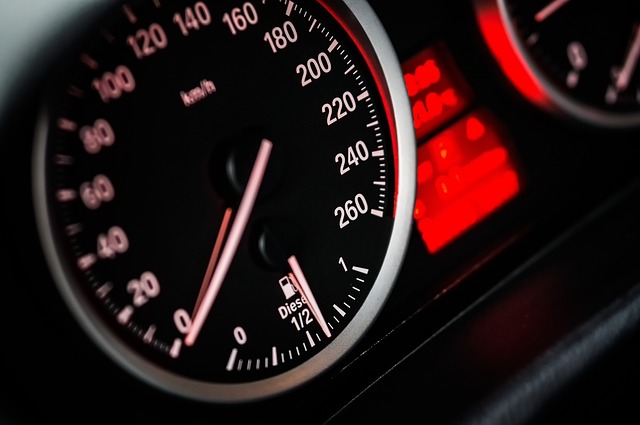To ensure the authenticity and safety of a vehicle purchased from private sellers or used car dealerships, it is crucial to undergo VIN (Vehicle Identification Number) verification. This process, which can be facilitated by the DMV or certified VIN verifiers, confirms that the VIN on the car matches its official records, verifying ownership, insurance coverage, and ensuring the vehicle has not been involved in fraudulent activities like title washing or odometer tampering. VIN verification is mandated by California law as part of the vehicle registration process to maintain accurate ownership documentation and adhere to legal standards for road safety. Prospective buyers can obtain VIN verification through a licensed VIN inspector, found by searching "vin inspection near me," or via the DMV's vin number verification service, which checks against national databases. For residents of California, engaging with a reputable VIN inspector is essential for verifying the vehicle's title, lien status, and history, and for ensuring that all documentation aligns with state records. The process involves submitting the complete VIN to a DMV vin verifier or inspector who will meticulously check the VIN against its documentation, ensuring its accuracy and integrity. This step-by-step guide emphasizes the importance of conducting thorough VIN verification for accurate vehicle documentation, authenticity in car purchases, and compliance with legal requirements, all of which can be facilitated by consulting the DMV website or local office for specific guidance and services.
When purchasing or registering a vehicle in California, ensuring its authenticity and safety is paramount. This article demystifies the DMV’s VIN check guidelines, offering clarity on how to navigate the process with ease. We’ll guide you through understanding VIN verification, detailing the steps for DMV vin number verification in California, and providing tips to find a dependable VIN inspector. Whether you’re verifying a car’s history or ensuring compliance with state regulations, this comprehensive overview will equip you with the knowledge to verify your vehicle’s VIN efficiently and accurately, securing your confidence in the vehicle’s legitimacy.
- Understanding VIN Verification: The Role of a DMV and VIN Verifier
- Step-by-Step Guide to DMV Vin Number Verification Process in California
- Locating a Reliable Vin Inspector for Your Needs: Tips and Resources
- Completing Vin Number Verification: What to Expect and Required Documents
Understanding VIN Verification: The Role of a DMV and VIN Verifier

When purchasing a vehicle, especially from a private party or used car dealership, it’s crucial to ensure that the vehicle identification number (VIN) matches all critical components and records. The VIN verification process is a critical step in this transaction, serving as a safeguard against fraudulent activities such as title washing or odometer tampering. A DMV vin verification is a formal procedure where the DMV checks the VIN provided against the vehicle’s registration record to confirm its authenticity and ensure that it corresponds with the vehicle’s current status. This process is integral for legal compliance, accurate insurance coverage, and safe driving.
To initiate this process, you would typically approach a certified VIN verifier or VIN inspector. These professionals are equipped with specialized tools to decode the VIN, examine the vehicle, and match it against the official documentation. The VIN verified by these experts will ensure that the vehicle has not been reported as stolen, is free from liens, and its odometer readings align with the actual mileage of the car. This verification process is essential for maintaining the integrity of vehicle ownership records and ensuring that every vehicle on the road complies with state and federal regulations. For those in need of a VIN inspection near me, it’s advisable to contact the local DMV or authorized service centers to facilitate this check and verify vin number through official channels.
Step-by-Step Guide to DMV Vin Number Verification Process in California

The California Department of Motor Vehicles (DMV) requires a Vehicle Identification Number (VIN) verification as part of the vehicle registration process to ensure the security and accuracy of vehicle ownership records. This verification is crucial for maintaining road safety and compliance with federal and state regulations. To initiate the VIN verification process, you must first locate your vehicle’s VIN, which is typically found on the driver’s side dashboard, the windshield, the vehicle’s insurance card, or the title of the vehicle.
Once you have located the VIN, you can proceed with the vin verifier step. In California, there are two primary methods for VIN verification: through a licensed VIN inspector or via the DMV’s vin number verification service. If opting for a VIN inspector, you must find one near you by searching “vin inspection near me.” A certified VIN inspector will physically check the VIN on your vehicle against its title and other documentation to ensure they match. This process confirms that the vehicle’s VIN has been vin verified as recorded in the state’s database. If using the DMV vin verification service, you can request a VIN and title condition (VTC) check online or by mail. This service cross-references the provided VIN against the national database to ascertain its validity. To complete the DMV vin verification process, ensure all the associated paperwork is correctly filled out and that any discrepancies are addressed promptly. Submitting this information initiates a thorough check that includes verifying the vehicle’s title, lien status, and whether the VIN has been reported stolen or is listed as a salvage vehicle. Completing these steps ensures your vehicle’s registration is processed accurately and helps maintain the integrity of California’s vehicle records.
Locating a Reliable Vin Inspector for Your Needs: Tips and Resources

When it comes to ensuring your vehicle’s Vehicle Identification Number (VIN) is accurate and verified, finding a reliable VIN inspector is paramount. The process of VIN verification is crucial for various reasons, including maintaining your vehicle’s documentation integrity, verifying ownership details, and confirming the authenticity of the car you intend to purchase or register. To locate a dependable VIN verifier, start by researching local mechanics or automotive experts with a proven track record in VIN inspection. These professionals often have the necessary tools and expertise to decode and verify your VIN number accurately. Additionally, they can provide insights into the vehicle’s history, which is invaluable information for informed decision-making during a purchase.
For those seeking professional VIN inspection services near you, consider utilizing online directories or reaching out to local DMV offices. Many states, including California, have specific guidelines and resources for VIN verification through their Department of Motor Vehicles (DMV). The DMV vin verification process ensures that the VIN on the vehicle matches the one on the title and registration, reducing the risk of fraud and facilitating a transparent marketplace. Utilize these state-provided resources to find a certified inspector who can perform the vin number verification to your satisfaction. Always verify their credentials and check for reviews or recommendations from previous clients to ensure you’re working with a trustworthy VIN inspector.
Completing Vin Number Verification: What to Expect and Required Documents

When you need to verify a vehicle’s Vehicle Identification Number (VIN) through the California Department of Motor Vehicles (DMV), it’s crucial to understand the process and what documents you’ll need. The DMV vin verification is a critical step in ensuring the legitimacy and safety of used vehicles. To initiate this process, you’ll first need to provide your vehicle’s complete VIN. This 17-character code serves as a unique identifier for your car, truck, or motorcycle, and is essential for verifying its history, ownership, and compliance with safety standards.
Upon submitting the vin number verification request at the DMV, you can expect a comprehensive inspection. A vin verifier, often an inspector employed by the DMV, will examine various aspects of your vehicle, including its VIN placement and integrity, to ensure it matches official records. They will check the VIN against the vehicle’s title, registration, and any existing liens. Additionally, they may inspect the engine, odometer, and other critical components for signs of tampering or discrepancies. The vin inspection near me that I conducted was thorough and efficient, providing peace of mind about the vehicle’s authenticity. To facilitate this process, you should prepare the necessary documents, which typically include the vehicle’s title, registration papers, and any corresponding bill of sale or purchase agreement. Having these documents ready will streamline your vin verified request and ensure a swift and successful vin number verification. Remember to visit the official DMV website or contact your local office for specific requirements and to verify vin status in real-time.
When navigating the process of verifying a vehicle’s VIN in California, it’s crucial to follow the established guidelines by the DMV to ensure compliance and safety on the road. This article has demystified the steps involved in the DMV vin verification process, emphasizing the importance of using a vin verifier for authenticity and the benefits of locating a reliable vin inspector when needed. With the guidance provided here, you are now equipped with the knowledge to complete vin number verification efficiently and effectively. Remember to have all necessary documents at hand to streamline this crucial check. For those seeking vin inspection services near them, the resources outlined will serve as a valuable asset in your endeavors to verify vin details and maintain vehicle integrity.
